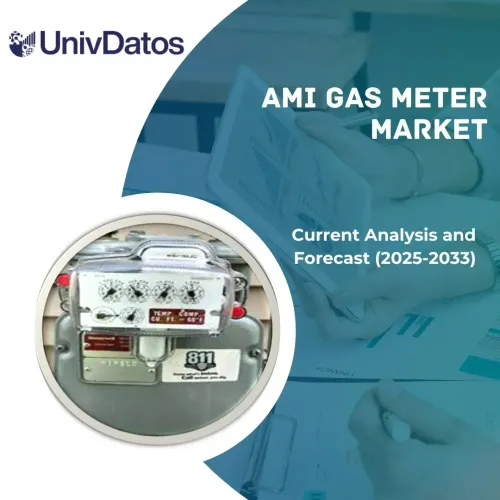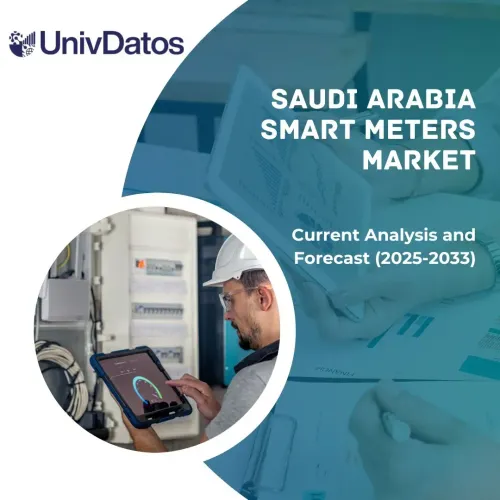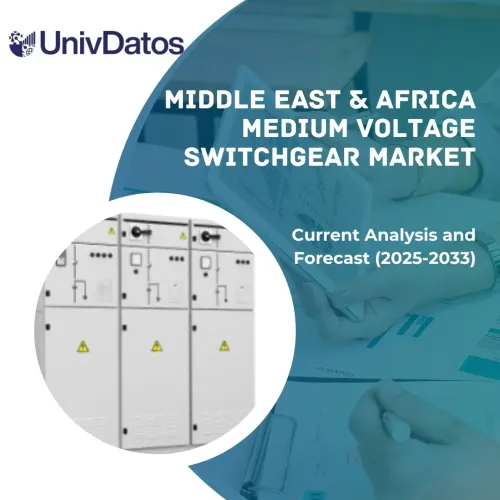- Home
- About Us
- Industry
- Services
- Reading
- Contact Us
Renewable Energy Certificate Market: Current Analysis and Forecast (2023-2030)
Emphasis on Energy Type (Solar Energy, Wind Power, Hydro-electric Power, and Gas power), Capacity (0-1,000KWH, 1,100-5,000KWH, and More than 5,000KWH), End Use (Voluntary and Compliance) and Region/Country
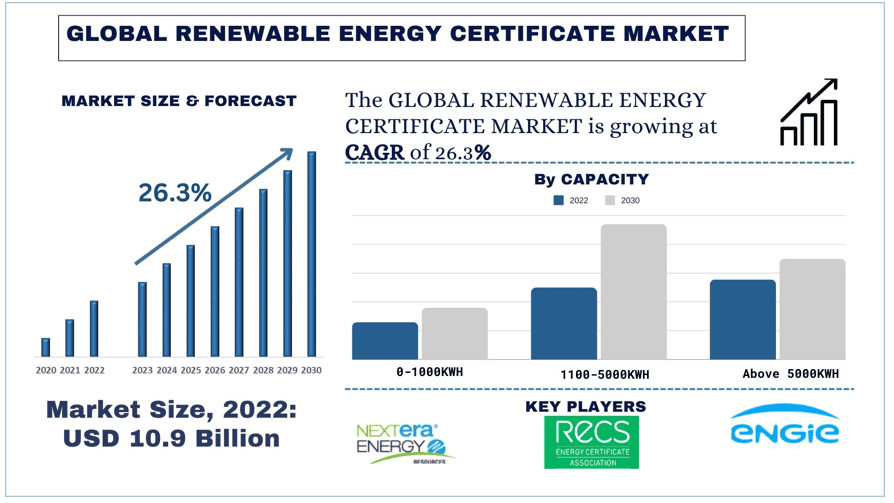
Renewable Energy Certificate Market Size and Forecast
The Renewable Energy Certificate Market is expected to grow at a strong CAGR of around 26.39 % during the forecast period(2023-2030).
Renewable Energy Certificate Market Analysis
Governments around the world are implementing policies and incentives to encourage the adoption of renewable energy sources and promote the use of RECs as a means of achieving their climate change and sustainability objectives. Additionally, the growing awareness of the impact of climate change on the environment and society has led to an increase in demand for cleaner energy sources and the purchase of RECs as a way to reduce carbon footprint. Moreover, Advances in technology have made renewable energy sources more cost-effective, reducing the cost of producing RECs and making them a viable option for businesses and households. Finally, Consumers are becoming more aware of the impact of their activities on the environment and are seeking products and services that align with their values and contribute to a sustainable future. This is driving demand for RECs from the voluntary segment of the market.
Some of the major players operating in the market are Central Electricity Regulatory Commission, Green-e Energy, Western Area Power Administration, General Services Administration, U.S. Environment Protection Agency, Defense Logistics Agency Energy, World Business Council for Sustainable Development, ENGIE North America, RECS Energy Certificate Association, and NextEra Energy Resources, LLC. Several M&As along with partnerships have been undertaken by these players to facilitate customers with hi-tech and innovative products/technologies.
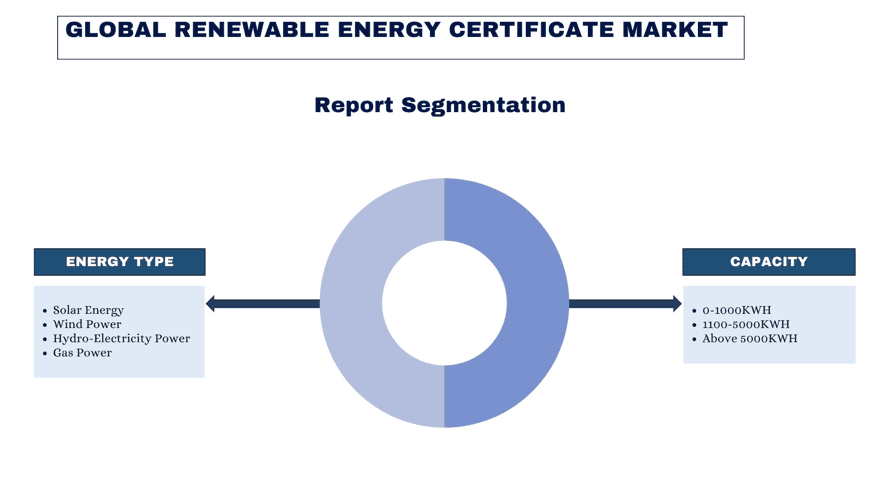
Renewable Energy Certificate Market Trends
“Amongst energy capacity, the wind power segment held significant growth in the market in 2022.”
Based on energy type, the market is segmented into solar energy, wind power, hydro-electric power, and gas power. Amongst these, the wind power segment of the renewable energy certificate market has significant growth because the wind power technology has advanced significantly over the years, leading to a reduction in the cost of generating electricity from wind turbines. This reduction in cost has made wind power more economically competitive with traditional forms of energy generation and has helped drive demand for RECs generated from wind power.
“Amongst end use , the compliance segment held a significant growth in the market. ’’
Based on end use, the market is segmented into voluntary and compliance. Amongst these, the compliance segment of the Renewable Energy Certificate (REC) market has significant growth due to various governments around the world have implemented mandatory renewable energy targets, which require organizations to purchase a certain number of RECs each year. This has led to an increase in demand for RECs from the compliance segment. Additionally, Companies in various industries are subject to strict environmental regulation that mandate the use of clean energy sources or RECs. These requirements help drive demand for RECs in the compliance segment.
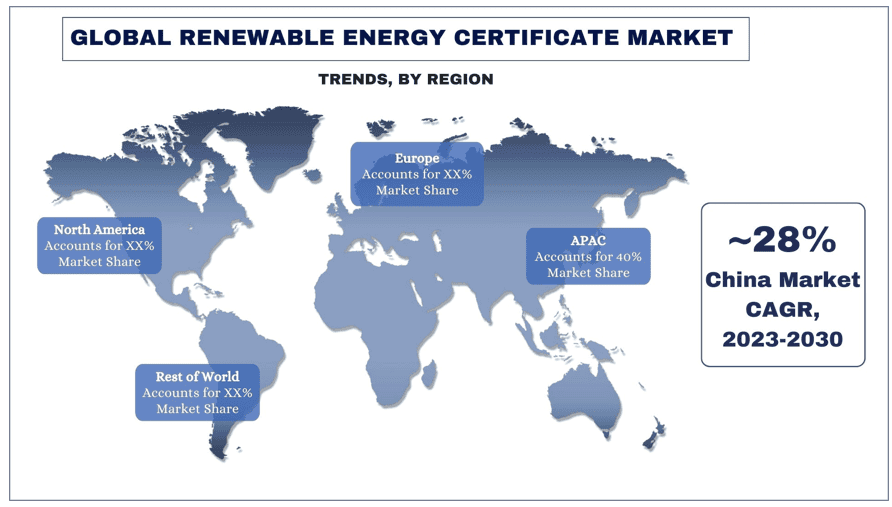
“Asia Pacific held a significant growth in renewable energy certificate market in 2022.”
The Asia Pacific region holds significant growth potential in the Renewable Energy Certificate (REC) market because the governments across the region are implementing policies and incentives to encourage the adoption of renewable energy sources and promote the use of RECs as a means of achieving their climate change and sustainability objectives. Additionally, there has been an increase in investment in renewable energy projects by companies in the region, driving demand for RECs to offset remaining emissions. The rising awareness of the impact of climate change has also created opportunities for the REC market to grow, particularly in vulnerable countries facing extreme weather events such as floods, droughts, and typhoons. Moreover, advances in technology have made renewable energy sources more cost-effective, reducing the cost of producing RECs and making them a viable option for businesses and households in the region. Finally, there is growing demand for cleaner and more sustainable energy sources in the Asia Pacific region, creating further opportunities for the REC market to grow.
Renewable Energy Certificate Market Report Coverage
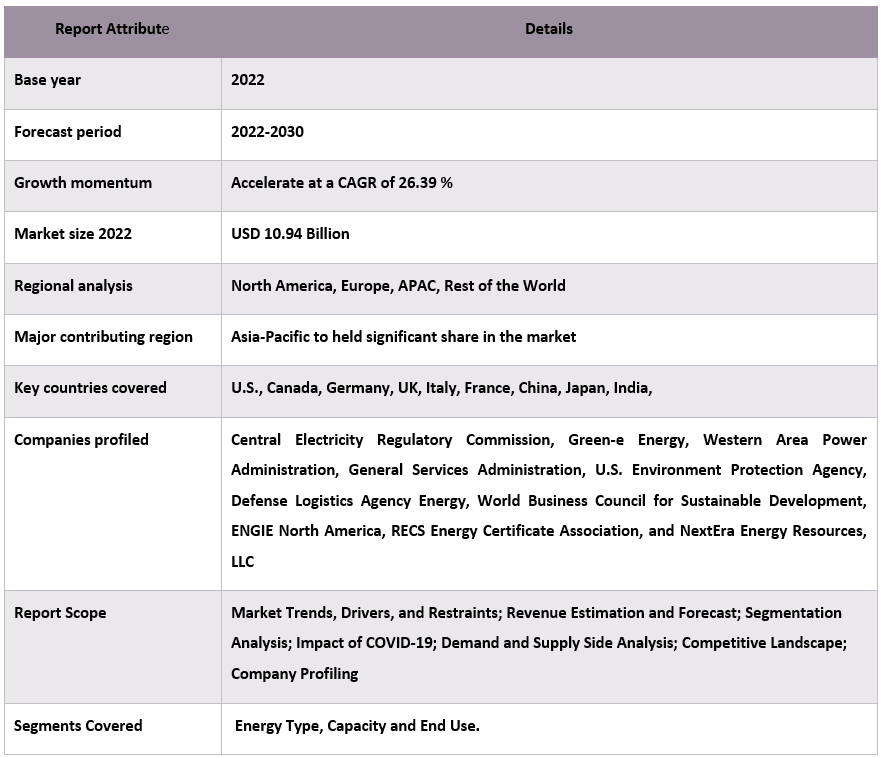
Reasons to buy this report:
- The study includes market sizing and forecasting analysis validated by authenticated key industry experts.
- The report presents a quick review of overall industry performance at one glance.
- The report covers an in-depth analysis of prominent industry peers with a primary focus on key business financials, product portfolios, expansion strategies, and recent developments.
- Detailed examination of drivers, restraints, key trends, and opportunities prevailing in the industry.
- The study comprehensively covers the market across different segments.
- Deep dive regional level analysis of the industry.
Customization Options:
The global renewable energy certificate market can further be customized as per the requirement or any other market segment. Besides this, UMI understands that you may have your own business needs, hence feel free to connect with us to get a report that completely suits your requirements.
Table of Content
Research Methodology for the Renewable Energy Certificate Market Analysis (2023-2030)
Analyzing the historical market, estimating the current market, and forecasting the future market of the global renewable energy certificate market were the three major steps undertaken to create and analyze the adoption of renewable energy certificate in major regions globally. Exhaustive secondary research was conducted to collect the historical market numbers and estimate the current market size. Secondly, to validate these insights, numerous findings and assumptions were taken into consideration. Moreover, exhaustive primary interviews were also conducted, with industry experts across the value chain of the global renewable energy certificate market. Post assumption and validation of market numbers through primary interviews, we employed a top-down/bottom-up approach to forecasting the complete market size. Thereafter, market breakdown and data triangulation methods were adopted to estimate and analyze the market size of segments and sub-segments of the industry pertains to. Detailed methodology is explained below:
Analysis of Historical Market Size
Step 1: In-Depth Study of Secondary Sources:
Detail secondary study was conducted to obtain the historical market size of the renewable energy certificate market through company internal sources such as annual reports & financial statements, performance presentations, press releases, etc., and external sources including journals, news & articles, government publications, competitor publications, sector reports, third-party database, and other credible publications.
Step 2: Market Segmentation:
After obtaining the historical market size of the renewable energy certificate market, we conducted a detailed secondary analysis to gather historical market insights and share for different segments & sub-segments for major regions. Major segments are included in the report like energy type, capacity, and end use. Further country-level analyses were conducted to evaluate the overall adoption of testing models in that region.
Step 3: Factor Analysis:
After acquiring the historical market size of different segments and sub-segments, we conducted a detailed factor analysis to estimate the current market size of the renewable energy certificate market. Further, we conducted factor analysis using dependent and independent variables such as increasing vehicle productions. A thorough analysis was conducted of demand and supply-side scenarios considering top partnerships, mergers and acquisitions, business expansion, and product launches in the renewable energy certificate market sector across the globe.
Current Market Size Estimate & Forecast
Current Market Sizing: Based on actionable insights from the above 3 steps, we arrived at the current market size, key players in the global renewable energy certificate market, and market shares of the segments. All the required percentage shares split, and market breakdowns were determined using the above-mentioned secondary approach and were verified through primary interviews.
Estimation & Forecasting: For market estimation and forecast, weights were assigned to different factors including drivers & trends, restraints, and opportunities available for the stakeholders. After analyzing these factors, relevant forecasting techniques i.e., the top-down/bottom-up approach were applied to arrive at the market forecast for 2028 for different segments and sub-segments across the major markets globally. The research methodology adopted to estimate the market size encompasses:
- The industry’s market size, in terms of revenue (USD) and the adoption rate of the renewable energy certificate market across the major markets domestically
- All percentage shares, splits, and breakdowns of market segments and sub-segments
- Key players in the global renewable energy certificate market in terms of products offered. Also, the growth strategies adopted by these players to compete in the fast-growing market.
Market Size and Share Validation
Primary Research: In-depth interviews were conducted with the Key Opinion Leaders (KOLs) including Top Level Executives (CXO/VPs, Sales Head, Marketing Head, Operational Head, Regional Head, Country Head, etc.) across major regions. Primary research findings were then summarized, and statistical analysis was performed to prove the stated hypothesis. Inputs from primary research were consolidated with secondary findings, hence turning information into actionable insights.
Split of Primary Participants in Different Regions

Market Engineering
The data triangulation technique was employed to complete the overall market estimation and to arrive at precise statistical numbers for each segment and sub-segment of the global renewable energy certificate market. data was split into several segments & sub-segments after studying various parameters and trends in the areas of vehicle type and technology in the global renewable energy certificate market.
The main objective of the Global Renewable Energy Certificate Market Study
The current & future market trends of the global renewable energy certificate market were pinpointed in the study. Investors can gain strategic insights to base their discretion for investments on the qualitative and quantitative analysis performed in the study. Current and future market trends determined the overall attractiveness of the market at a regional level, providing a platform for the industrial participant to exploit the untapped market to benefit from a first-mover advantage. Other quantitative goals of the studies include:
- Analyze the current and forecast market size of the renewable energy certificate market in terms of value (USD). Also, analyze the current and forecast market size of different segments and sub-segments.
- Segments in the study include areas of energy type, capacity, and end use.
- Define and analyze the regulatory framework for the renewable energy certificate
- Analyze the value chain involved with the presence of various intermediaries, along with analyzing customer and competitor behaviors of the industry.
- Analyze the current and forecast market size of the renewable energy certificate market for the major region.
- Major countries of regions studied in the report include Asia Pacific, Europe, North America, and the Rest of the World
- Company profiles of the renewable energy certificate market and the growth strategies adopted by the market players to sustain in the fast-growing market.
- Deep dive regional level analysis of the industry.
Frequently Asked Questions FAQs
Q1: What is the current market size and growth potential of the global renewable energy certificate market?
Q2: What are the driving factors for the growth of the global renewable energy certificate market?
Q3: Which segment has the largest share of the global renewable energy certificate market by end use?
Q4: Which region will dominate the global renewable energy certificate Market?
Q5: Who are the key players operating in the global renewable energy certificate market?
Related Reports
Customers who bought this item also bought

